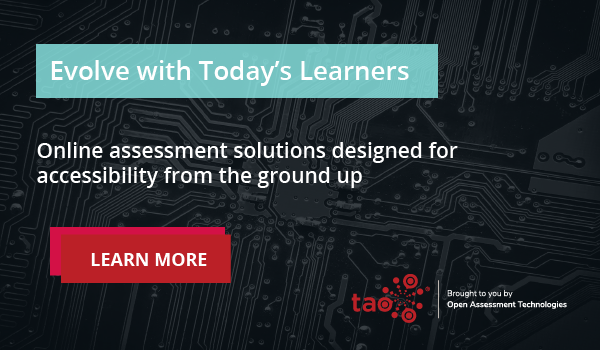In the past, students had Individual Education Plans (IEPs) or similar conventions that described a particular diagnosis, which permitted certain accommodations for assessments. Even if the IEP listed specific learning and testing environment accommodations, they may have only been “human readable” instructions.
For online assessment this can be problematic, as the delivery system can’t understand the particular needs and preferences of an individual test taker simply based on a diagnosis.
Tell me what to do
Even if a computer could make intelligent decisions about your needs based on a specific diagnosis, like dyslexia, it couldn’t know what support tools are most useful or know if you’re familiar with the tools. People are complicated – even if problems can be diagnosed, there is usually a wide spectrum of capabilities for any particular issue, and it gets even more complicated when people have multiple issues.
Online assessment systems need to increase accessibility for their interfaces, and provide support tools for test takers who need them. Developers have shifted to making online support tools more universally designed (see our recent blog on removing barriers in online testing), and the assignment of specific accommodation support tools has become more common as a way to meet the needs of test takers. Those computer systems need to be told specifically what to do.
While online assessment systems should be accessible for users of assistive technologies like screen readers – via adherence to the Web Content Accessibility Guidelines – many K12 programs provide individual testing accommodations that computer interfaces can provide only for specific test takers who need support.
Examples of online accessibility and accommodations include:
- Allowing for additional testing time and breaks
- Providing sign language translations alongside the written language of the test
- Access to a built-in text-to-speech tool (sometimes called computer read aloud)
- Letting the test taker adjust the size, appearance, spacing, and colors of text content
- Supplemental content for blind users like keyboard instructions or tactile orientations
- Providing translations either of the all the content, or for specific keywords
- Extra language support for language learners
Moving Beyond the IEP: The AccessForAll Standard
The IMS Global Consortium has had members participating in the AccessForAll standard since 2003. With the development of the Accessible Portable Item Protocol (APIP) in 2009, and the more recent Question and Test Interoperability (QTI) version 3, AccessForAll has included specific, standardized vocabularies for telling assessment systems which support features and tools to expose to test takers.
This requires educators, test takers, and their agents to make decisions about which tools to provide to the test taker before the test. The set of feature selections is called “Personal Needs and Preferences” (PNP), and can be associated with a test taker within rostering systems.
Some parts of the world don’t permit recording this kind of information for individuals, and test takers need to make these choices themselves before beginning their test sessions.
In either event, Educators need to work with students to help them make informed choices about which tools will actually help, rather than distract them during the test.
More Access for More Test Takers
Educators can now assign the solution rather than describing the problem. This has in some ways loosened the restriction on who may or may not receive support tools during assessments. If inexpensive tools are easily available, it’s more likely school systems can provide accommodations for students, allowing us to better measure the ability of test takers on the subject of the test.
The IEP, while still important for students, is not an effective way to provide support for online test takers. What works for some people with a specific diagnosis may not work for others. Only by having a range of flexible solutions can we provide access for all people.


